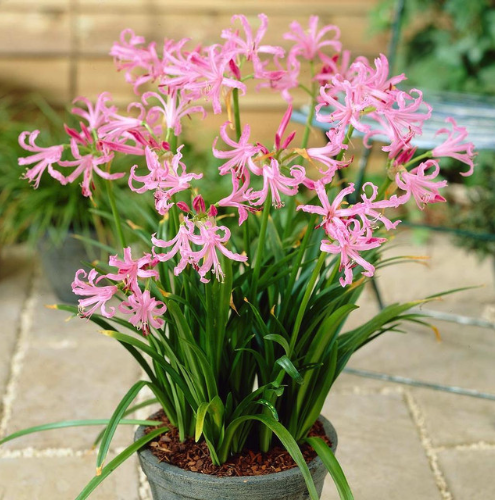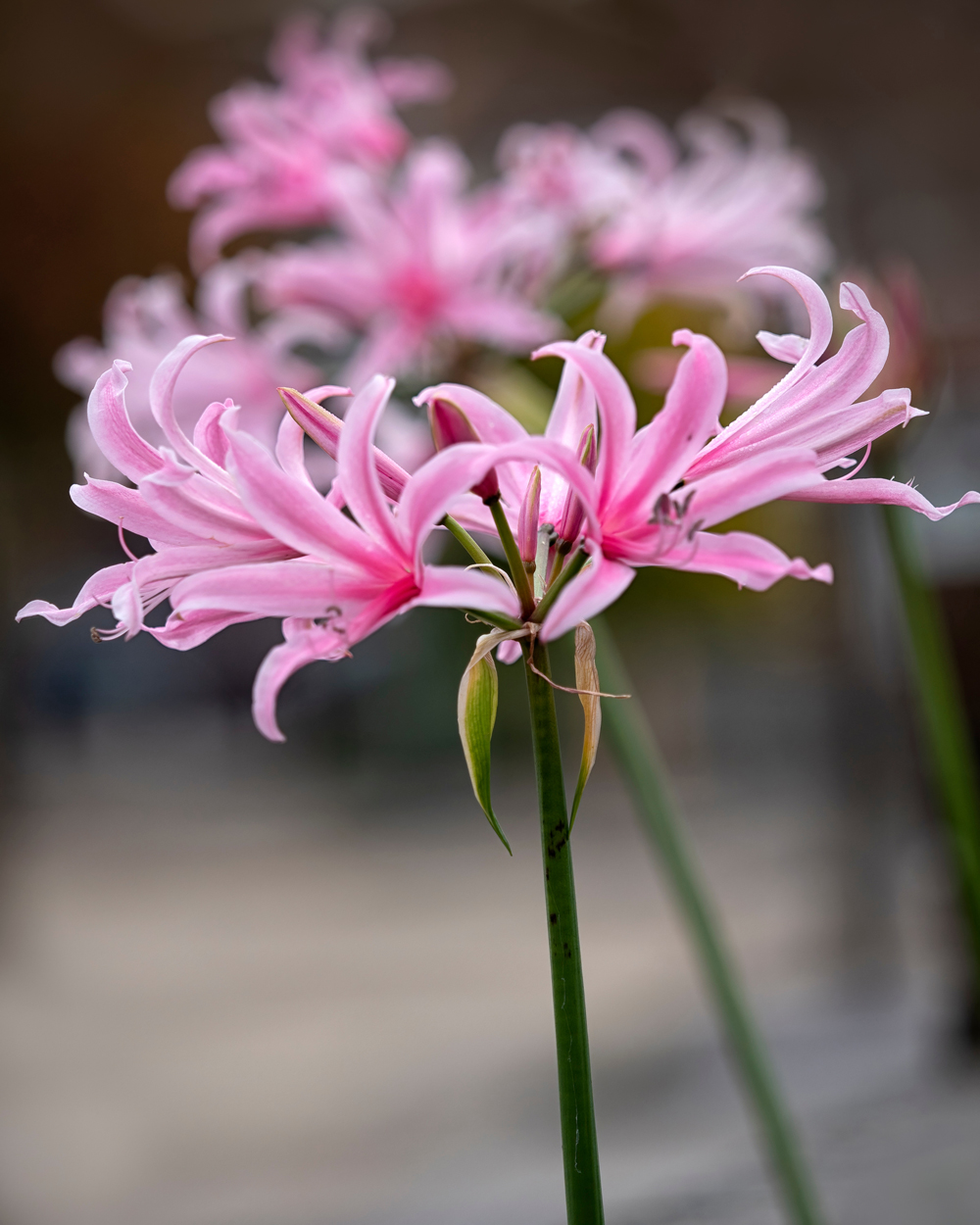Your Guide to Planning, Planting, and Growing Nerines
These members of the amaryllis family, also known as Guernsey lilies or spider lilies, are native to South Africa. The bulbs burst into bloom in early fall when most other flowering plants are fading away. Like amaryllis, nerines are sensitive to cold weather and are winter hardy only in zones 9-11. (Click HERE to find your hardiness zone.) Cold climate gardeners can plant the bulbs in spring for autumn blooms, and then bring the bulbs indoors for winter.

What to Know About Nerines
The flowers of nerines are produced in clusters at the top of leafless stems. Each flower is about 2” across and has narrow, recurved petals with prominent stamens and anthers. Pink is the most common flower color, though white and red flowers are also available.
Nerines have narrow, strappy, slightly floppy leaves, similar to those of a daffodil. These leaves emerges from the bulb in early summer and die back in early fall, just before the flowers start to bloom. You can expect each bulb to produce at least one, 12-24" tall flower stalk with 4-10 buds.

How to Plant Nerines
In areas where nerines are winter hardy (zones 8-10), the bulbs may be planted directly into the garden. Choose a sunny or mostly sunny spot that provides some shelter from wind. Most importantly, make sure the soil is very well drained. Nerines need moisture in the spring, but the soil should be quite dry during the rest of the year. Plant the bulbs 4” apart with the neck of the bulb about 1” above the soil surface. Nerines like sun on their necks and good air circulation. Avoid crowding them with other plants.
In colder areas, growing nerines in pots makes it easier to provide the bright sunlight and warm, well-drained soil these plants need to thrive. When the bulbs are in pots, it's also easier to bring them indoors for the winter. Like amaryllis, nerines have fleshy roots that need plenty of room to expand. Choose a container with a drainage hole that is large enough to provide ample root space. Space the bulbs about 3” apart, and plant so the neck of the bulb is exposed. Water sparingly until the bulbs sprout.

How to Care for Nerines
Though nerines need moisture when they are in active growth, it’s important not to overwater them. While the bulbs are dormant, they should not be watered at all. Fertilizing with a water-soluble, low nitrogen fertilizer can improve flowering. Do this only when the bulbs are in active growth (with green leaves) and apply at half the recommended rate.
Once the bulb’s leaves die back in late summer, you can simply pull them away. Remove the flowers as soon as they finish blooming to help the plant conserve energy for the following year.
If storing nerine bulbs indoors during the winter, keep them totally dry and don't let them get colder than 45°F.
Nerines dislike being disturbed and flower best when the bulbs are crowded. This is another good reason to grow them in pots. Divide nerines only when the clumps become congested and flowering declines. The bulbs should bloom the first year after planting, but if they don’t, give them another year to settle in.
Bulbs are available for spring planting HERE.
